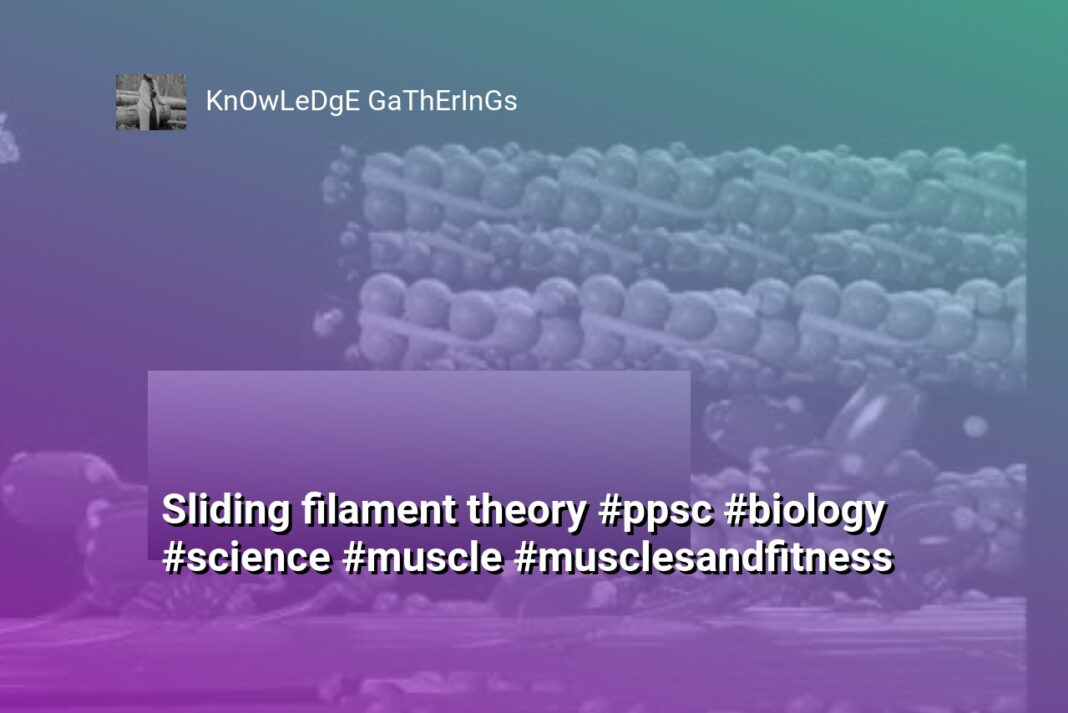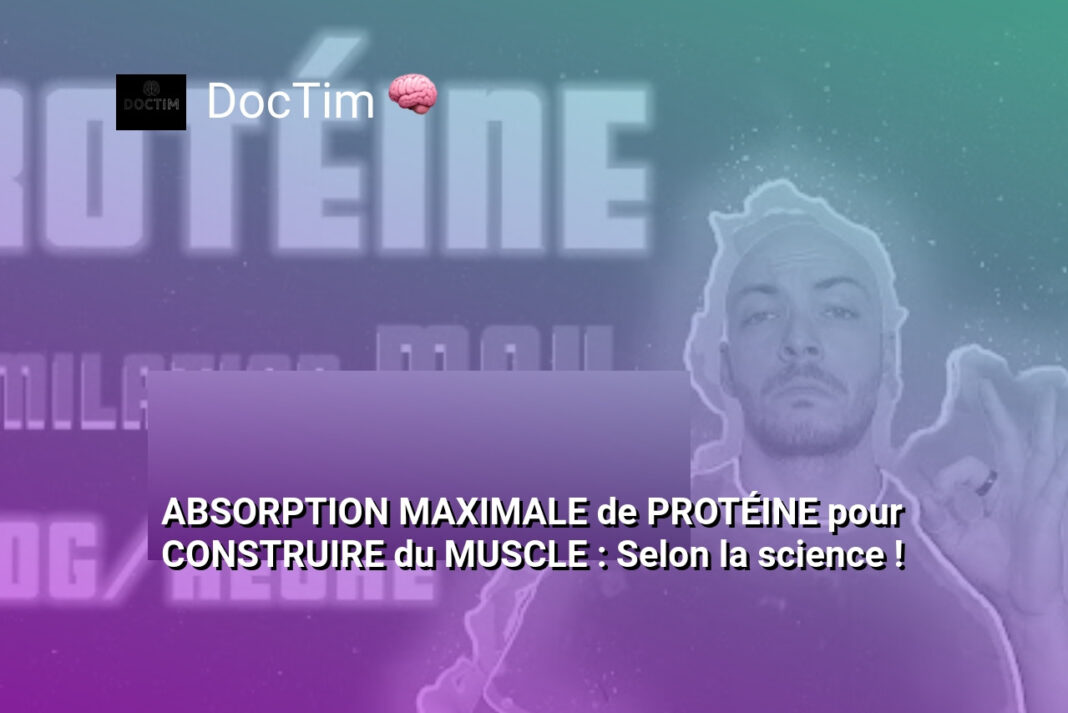The Bottom Line:
- The sliding filament theory explains the mechanism of muscle contraction at the cellular level, where muscle proteins slide past each other to generate movement.
- Skeletal muscles are composed of muscle fibers, each containing hundreds to thousands of myofibrils, which are made up of sarcomeres.
- The sarcomere consists of thick filaments (myosin) and thin filaments (actin), and the sliding of these filaments past each other, known as the actin-myosin cycling, is the basis of muscle contraction.
- The contraction process is initiated by a nerve signal, which triggers the release of calcium and causes a change in the tropomyosin molecule, exposing the binding sites on the actin proteins.
- The myosin heads then bind to the actin binding sites, forming a crossbridge, and the subsequent release of inorganic phosphate and ADP initiates the power stroke, pulling the thin filament closer to the midline of the sarcomere, resulting in muscle contraction.
The Muscle Structure: Layers and Connective Tissues
The Muscle Fiber Structure: Layers and Connective Tissues
Skeletal muscles are composed of intricate layers and connective tissues that work together to facilitate movement. At the outermost level, the muscle is surrounded by a protective sheath called the epimysium. This connective tissue layer contains numerous muscle fibers, also known as fasciculi.
Each fasciculus is further enveloped by another layer of connective tissue called the perimysium. Within each fasciculus, individual muscle fibers are encased in a delicate sheath called the endomysium. These muscle fibers, which can range from 10 to 100 in number, are the fundamental contractile units of the muscle.
The Myofibril Structure
The muscle fibers themselves are composed of hundreds to thousands of smaller structures called myofibrils. These myofibrils are the basic functional units responsible for the muscle’s ability to contract and generate force. Each myofibril is made up of numerous sarcomeres, which are the smallest contractile units within the muscle.
The sarcomere consists of several key components, including the A-band, which contains the entire thick myosin filament, and the I-band, which contains only the thin actin filament. The Z-line marks the boundary between adjacent sarcomeres, while the H-zone is the region between the Z-line and the M-line, which is the central point of the sarcomere.
The Sliding Filament Mechanism
The sliding filament theory explains how the muscle contraction process occurs at the cellular level. During muscle contraction, the thin actin filaments slide over the thick myosin filaments, causing the sarcomere to shorten. This sliding motion is facilitated by the formation of cross-bridges between the myosin heads and the actin binding sites, which pull the thin filaments towards the center of the sarcomere.
The cross-bridge formation and subsequent power stroke are driven by the energy released from the hydrolysis of ATP molecules. As the nerve signal reaches the muscle cell, calcium is released, triggering a conformational change in the tropomyosin molecule, which exposes the actin binding sites. The myosin heads then bind to these sites, forming the cross-bridges and initiating the contraction cycle. This process continues until the nerve signal stops, allowing the muscle to relax and the sarcomeres to return to their resting length.
The Sarcomere: The Basic Unit of Muscle Contraction
The Sarcomere: The Fundamental Unit of Muscle Contraction
The sarcomere is the basic structural and functional unit of skeletal muscle fibers, responsible for the contraction and movement of muscles. It is composed of a highly organized arrangement of proteins, including actin and myosin, which interact to generate the force necessary for muscle contraction.
The Anatomy of the Sarcomere
The sarcomere is bounded by two Z-lines, which serve as anchoring points for the thin actin filaments. Between the Z-lines lies the A-band, which contains the thick myosin filaments. The I-band, located on either side of the A-band, consists solely of the thin actin filaments. The H-zone, situated in the middle of the A-band, is the region where only the myosin filaments are present, without the overlapping actin filaments.
The Sliding Filament Mechanism
During muscle contraction, the thin actin filaments slide past the thick myosin filaments, causing the sarcomere to shorten. This process is known as the sliding filament mechanism. The myosin heads, which protrude from the thick filaments, bind to the actin binding sites, forming cross-bridges. The myosin heads then undergo a conformational change, pulling the actin filaments towards the center of the sarcomere, resulting in the shortening of the overall structure.
The contraction cycle is driven by the hydrolysis of ATP, which provides the energy necessary for the myosin heads to detach from the actin binding sites, reset, and then reattach to the actin, repeating the cycle. This cyclic interaction between the actin and myosin filaments is the fundamental mechanism underlying muscle contraction at the cellular level.
The precise coordination and timing of these events, orchestrated by various regulatory proteins, such as tropomyosin and troponin, ensure the efficient and controlled contraction of the muscle fibers, ultimately leading to the movement of the entire muscle.
The Sliding Filament Theory: Actin and Myosin Interaction
The Interplay of Actin and Myosin: Powering Muscle Contraction
The sliding filament theory provides a comprehensive understanding of how muscle contraction occurs at the cellular level. At the heart of this mechanism are the interactions between two key proteins: actin and myosin.
The Sarcomere: The Fundamental Unit of Muscle Contraction
The basic structural unit of a muscle fiber is the sarcomere, which consists of several key components. The A-band contains the entire thick myosin filament, while the I-band contains only the thin actin filament. The Z-line marks the boundary between adjacent sarcomeres, and the H-zone is the region between the M-line and the Z-line, containing only the myosin filament.
The Actin-Myosin Interaction: Generating Muscle Force
During muscle contraction, the thin actin filaments slide over the thick myosin filaments, causing the sarcomere to shorten. This sliding motion is driven by the interaction between the myosin heads and the actin binding sites. When a nerve signal reaches the muscle cell, calcium is released, causing a conformational change in the tropomyosin molecule. This shift exposes the actin binding sites, allowing the myosin heads to attach and form cross-bridges.
As inorganic phosphate is released, the myosin heads undergo a power stroke, pulling the actin filaments closer to the M-line. The subsequent release of ADP triggers the detachment of the myosin heads from the actin binding sites. A new ATP molecule then binds to the myosin heads, causing them to release from the actin and reset for the next contraction cycle.
This cycle of attachment, power stroke, and detachment continues as long as the nerve signal persists, resulting in the shortening of the sarcomere and the contraction of the muscle fiber. The coordinated action of millions of sarcomeres within a muscle ultimately generates the force required for movement.
The Contraction Cycle: Calcium, Crossbridge Formation, and Power Stroke
Calcium Release and Crossbridge Formation
When a nerve signal reaches the muscle cell, it triggers the release of calcium ions (Ca2+) from the sarcoplasmic reticulum, a specialized organelle within the muscle fiber. This influx of calcium causes a conformational change in the tropomyosin molecule, a regulatory protein that sits on the actin filament. The shift in tropomyosin position exposes the binding sites on the actin proteins, allowing the myosin heads to interact with them.
The Power Stroke and ATP Hydrolysis
The myosin heads then bind to the exposed binding sites on the actin filaments, forming a crossbridge. As inorganic phosphate (Pi) is released from the myosin head, the crossbridge is stabilized, and this triggers the power stroke. During the power stroke, the thin actin filament is pulled closer towards the center of the sarcomere, the basic contractile unit of the muscle fiber. This shortening of the sarcomere is the basis of muscle contraction.
Crossbridge Detachment and Muscle Relaxation
The binding of a new ATP molecule to the myosin head causes the crossbridge to detach from the actin filament. The ATP is then hydrolyzed to ADP and Pi, and the energy released from this process causes the myosin head to “cock” back, like the trigger of a gun. This cocked position of the myosin head is ready to bind to the actin filament once again, continuing the contraction cycle. This cycle of crossbridge formation, power stroke, and crossbridge detachment continues as long as the nerve signal is present, resulting in sustained muscle contraction. When the nerve signal stops, the calcium is pumped back into the sarcoplasmic reticulum, the tropomyosin shifts back to its original position, and the muscle relaxes.
The Role of ATP in Muscle Contraction
The Energetic Fuel for Muscle Contraction: The Role of ATP
Adenosine Triphosphate (ATP) plays a crucial role in the muscle contraction process, serving as the primary energy currency for the sliding filament mechanism. This high-energy molecule is essential for powering the cross-bridge cycling between the actin and myosin filaments, which is the driving force behind muscle contraction.
The ATP-Powered Cross-Bridge Cycle
The cross-bridge cycle is a series of events that occur during muscle contraction, and ATP is the key player in this process. When a nerve signal reaches the muscle cell, it triggers the release of calcium, which causes a conformational change in the tropomyosin molecule. This shift exposes the binding sites on the actin filaments, allowing the myosin heads to attach and form cross-bridges.
As the inorganic phosphate is released from the myosin heads, the ADP is also released, initiating the power stroke. This power stroke pulls the thin actin filaments closer to the center of the sarcomere, resulting in the shortening of the muscle fiber. The energy required for this movement is provided by the hydrolysis of ATP to ADP and inorganic phosphate.
The Regeneration of ATP
To maintain a continuous supply of energy for muscle contraction, the cell must constantly regenerate ATP. This process occurs through various metabolic pathways, including aerobic respiration and anaerobic glycolysis. During aerobic respiration, glucose and other nutrient molecules are broken down in the presence of oxygen, producing a large amount of ATP. In the absence of oxygen, the anaerobic glycolysis pathway can also generate ATP, albeit at a lower efficiency.
The regeneration of ATP is crucial, as the muscle cell’s ATP stores are quickly depleted during intense or prolonged physical activity. The body’s ability to replenish these ATP stores is what determines the duration and intensity of muscle contraction, as well as the onset of muscle fatigue.
In summary, the role of ATP in muscle contraction is paramount. It provides the necessary energy for the cross-bridge cycling between actin and myosin, driving the sliding filament mechanism that ultimately results in muscle shortening and force generation. The continuous regeneration of ATP through various metabolic pathways ensures that the muscle can sustain its contractile activity over time.





